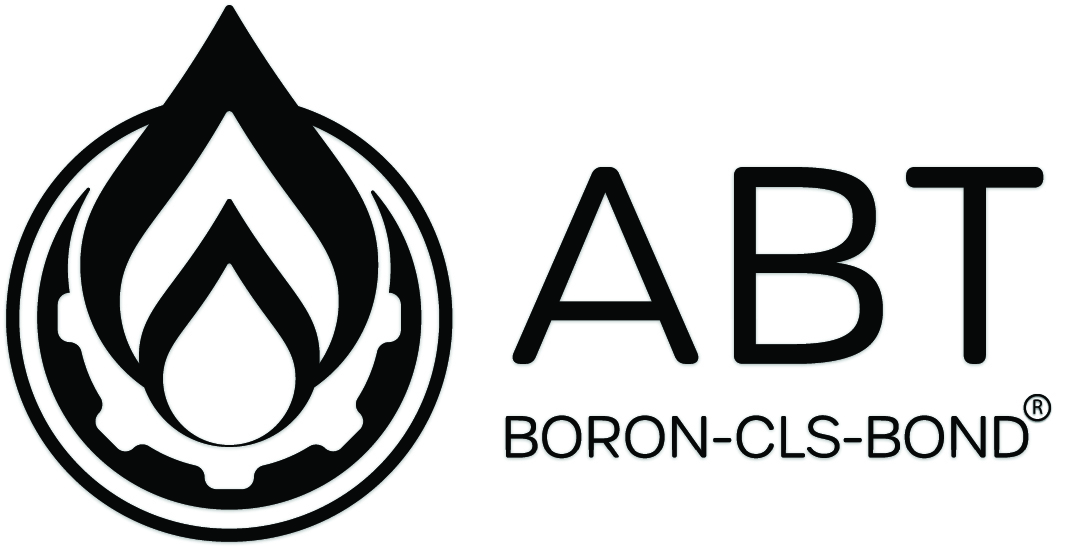Discover Vincispin – Your Ultimate Guide to Innovative Spinning Solutions_3
-
Discover Vincispin – Your Ultimate Guide to Innovative Spinning Solutions
-
Understanding the Technology Behind Vincispin
-
How Does Vincispin’s Spinning Mechanism Work?
-
The Benefits of Advanced Materials in Spinning Technology
-
Comparative Analysis: Vincispin vs Traditional Spinning Techniques
-
Applications of Vincispin in Various Industries
In the realm of textile engineering, the evolution of rotation technology has reached new heights, pushing the boundaries of performance and efficiency. A comprehensive examination of contemporary systems reveals a plethora of designs vincispin casino tailored for specific applications, ensuring optimal results in various industrial environments. With unique features that set them apart, these mechanisms are not just functional components; they are essential catalysts for transformative production processes.
Modern advancements in rotational apparatuses offer unmatched precision, enabling manufacturers to maintain consistent quality while minimizing waste. The integration of cutting-edge materials and ergonomic designs significantly enhances user experience, allowing for seamless operation in high-demand settings. Moreover, detailed specifications highlight the varied load capabilities and speed adjustments, catering to the diverse needs of today’s fabric producers.
Emphasizing sustainability, leading manufacturers are now implementing eco-friendly practices in the development of their rotation engines. These include energy-efficient models and recyclable materials, which contribute positively to environmental initiatives without sacrificing performance. Exploring these eco-conscious innovations provides valuable insights for industry players aiming to reduce their carbon footprint while achieving proficient output.
For enthusiasts and professionals alike, an in-depth understanding of the latest offerings in this exciting field will facilitate informed decision-making. By evaluating performance metrics and aligning them with operational requirements, stakeholders can significantly enhance productivity and ensure longevity in the competitive landscape.
Understanding the Technology Behind Vincispin
The engineering principles integral to Vincispin systems are a result of meticulous research and development. Central to these mechanisms is the application of advanced materials that enhance durability and weight efficiency. An array of polymers and composite materials are utilized, allowing for higher strength-to-weight ratios while maintaining performance under stress.
The precision in the rotation mechanism is achieved through state-of-the-art bearing systems. These components minimize friction and ensure smooth operation, significantly extending the lifespan of the equipment. By leveraging computer-aided design (CAD) technology during the manufacturing process, each part is fine-tuned for optimal performance in various environments.
Additionally, the incorporation of smart sensors into the design facilitates real-time monitoring of performance metrics. This capability empowers users to adjust settings based on specific requirements, optimizing the operation dynamically. Historical data analysis supports predictive maintenance, ultimately reducing downtime.
Another essential element of these systems is the control software, which is engineered for intuitive user interaction. The interface allows for customized settings, adapting to various user preferences and operational contexts. Compatibility with mobile applications enhances accessibility, providing users with insights and control from anywhere.
| High-Performance Materials | Utilization of advanced polymers and composites | Improved strength, reduced weight |
| Precision Bearings | Low-friction components for smooth rotation | Extended equipment lifespan |
| Smart Sensors | Real-time monitoring of performance | Dynamic optimization and predictive maintenance |
| User-Friendly Software | Intuitive interface with customization options | Enhanced user experience and control |
This combination of cutting-edge engineering, material science, and user-centric design establishes a new benchmark in the industry, setting these systems apart from traditional counterparts.
How Does Vincispin’s Spinning Mechanism Work?
The core functionality of Vincispin’s rotation mechanism lies in its sophisticated engineering. At the heart of the design is a dual-axis rotor system, which enables precise and controlled movement. This ensures a smooth experience during operation, reducing wear and fatigue on the components.
The innovative use of ball bearings allows for minimal friction, thus enhancing the efficiency of the rotation. These bearings are strategically positioned to bear the load evenly across the device, ensuring stability even at high speeds.
Each unit is equipped with a responsive torque adjustment dial. This feature permits users to fine-tune the resistance levels, accommodating various preferences and skill levels. The mechanism responds swiftly to user input, enabling seamless transitions between different modes of operation.
Maintenance has been streamlined in this setup. Regular checks involve lubricating the bearings and confirming the torque settings. Users are advised to follow the maintenance schedule to prolong the lifespan of the mechanism and ensure optimal performance.
Safety features are built into the design, including an automatic shut-off function that engages during abnormal operation or when overheating is detected. This adds a critical layer of protection, enhancing the overall user experience.
For optimal results, it is recommended to operate the machine within the predefined speed ranges. Overexerting the device can lead to diminished performance and potential damage to the internal components.
Overall, the construction of this mechanism embodies a blend of precision engineering and user-centric design, making it a standout choice for those seeking reliable and effective performance.
The Benefits of Advanced Materials in Spinning Technology
Utilizing cutting-edge materials in the realm of textile production offers a multitude of advantages that optimize performance and efficiency. High-performance polymers, such as PVA (Polyvinyl Alcohol) and PET (Polyethylene Terephthalate), exhibit superior strength-to-weight ratios. This allows for the creation of lightweight yet durable fabrics, significantly enhancing the final product’s usability.
Another pivotal aspect is the improved moisture management enabled by sophisticated fibers. Materials engineered with hydrophilic properties absorb moisture more effectively, which can translate to increased comfort in clothing. This is particularly beneficial for athletic wear, where sweat-wicking capabilities are crucial for performance.
Moreover, the incorporation of nanotechnology in material development leads to products with advanced protective features. Fabrics treated with nanoparticles can exhibit resistance to UV radiation, thus protecting the skin from harmful rays and extending the lifespan of textiles exposed to sunlight.
Cost efficiency is also an important consideration. Utilizing advanced composites can reduce production costs over time by minimizing material wastage and enhancing the longevity of the end product, leading to lower replacement rates and decreased resource consumption.
Furthermore, integration of smart textiles has opened the door to interactive fabrics that sense environmental changes. These can adapt to temperature variations or moisture levels, providing feedback to the wearer and enhancing utility in various applications, from healthcare to sports gear.
Lastly, sustainability is a growing focus within the industry. Biodegradable materials are gaining traction, allowing for lower environmental impact without sacrificing quality. This approach not only meets consumer demands for eco-friendliness but also adheres to regulations aimed at reducing global waste.
Comparative Analysis: Vincispin vs Traditional Spinning Techniques
When examining contemporary methods for fiber manipulation, it is essential to evaluate the distinctions between Vincispin and conventional approaches. Traditional spinning often relies on manual processes or older machinery, which can limit efficiency and precision. In contrast, Vincispin’s technology incorporates automation and advanced mechanisms, enabling higher output quality and consistency.
Process Efficiency: Conventional spinning techniques frequently involve labor-intensive steps, leading to longer production cycles. In contrast, the proprietary system utilized by Vincispin optimizes wool and synthetic fiber processing, reducing time frames significantly. This efficiency allows manufacturers to meet fluctuating market demands swiftly.
Material Versatility: While traditional methods often cater to specific types of fibers, Vincispin accommodates a broader range, including blends that were previously challenging to work with. This adaptability opens new avenues for designers and manufacturers, allowing for more creativity in fabric development.
Energy Consumption: Conventional spinning can consume substantial energy, resulting in higher operational costs. Vincispin’s technology is designed to minimize energy usage while maintaining output levels, thus offering a more sustainable and cost-effective alternative for production facilities.
Quality Control: The monitoring mechanisms in traditional techniques rely heavily on operator skill, which can lead to inconsistencies. In comparison, Vincispin employs advanced software to track quality throughout the production cycle, ensuring uniformity and reducing waste.
Labor Requirements: Traditional spinning often demands skilled artisans for effective operation, thus raising labor expenses. With Vincispin’s automated features, the necessity for highly skilled personnel diminishes, allowing for more accessible training of operators and reduced labor costs.
Production Scalability: As demand grows, scaling operations with traditional methods can be cumbersome and slow-moving. Vincispin provides a modular approach, allowing businesses to easily expand their production capabilities without significant downtime or additional investments in outdated equipment.
In summation, the choice between Vincispin and traditional fiber manipulation methods hinges on specific operational goals, market demands, and desired quality levels. The former presents robust advantages in efficiency, versatility, and sustainability that may align better with modern textile industry needs.
Applications of Vincispin in Various Industries
The versatility of Vincispin technology finds applications across numerous sectors, enhancing processes and product quality. Here are some notable areas of implementation:
-
Textile Manufacturing:
This approach significantly improves yarn production efficiency, allowing for finer spinning and better fiber alignment. Manufacturers report increased output rates and reduced waste, particularly in cotton and synthetic fiber processing.
-
Automotive Industry:
In automotive textiles, the method enhances the durability and aesthetic appeal of interior fabrics. The technology enables the creation of lightweight yet robust materials that meet stringent safety standards.
-
Aerospace Sector:
For aerospace applications, the refined processes yield materials that withstand extreme conditions. This advancement is crucial for components needing both strength and weight efficiency, contributing to improved fuel economy and performance.
-
Medical Devices:
Medical textiles benefit from enhanced biocompatibility and antimicrobial properties. The precise control in fabric structure aids in manufacturing ergonomic and long-lasting surgical garments and implantable devices.
-
Construction Materials:
In construction, this technology is leveraged to create textiles that provide superior insulation and durability. Products such as advanced geotextiles improve soil stability and moisture management in civil engineering projects.
-
Sports Equipment:
Sporting goods manufacturers employ the techniques to develop high-performance apparel and gear. The combination of flexibility and breathability results in equipment that enhances athletes’ performance while ensuring comfort.
Integrating this technology into various industries not only boosts production efficiency but also leads to the development of superior products, meeting modern market demands.






